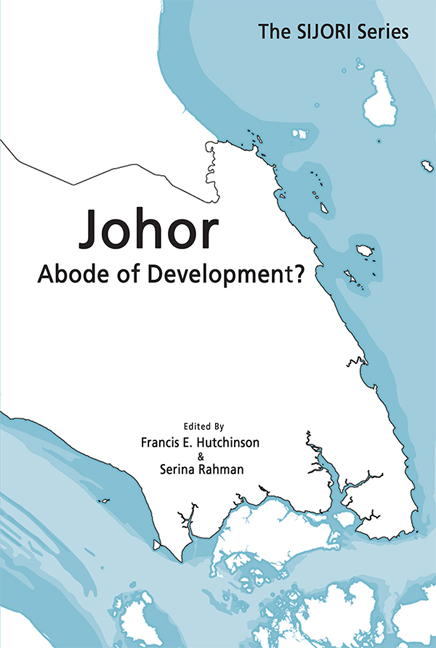13 - Foreign Workers in Johor: The Dependency Dilemma
Published online by Cambridge University Press: 24 November 2020
Summary
INTRODUCTION
In recent years, Johor's economic growth has been above the national average. In fact, the state's broad-based economy is the third largest contributor to Malaysia's gross domestic product (GDP) across agriculture, manufacturing and services (Maslynnawati, Weerasena, and Fawzi 2017).
However, many activities within these sectors are synonymous with high volumes of foreign workers. As these activities have grown, so too have the number of foreign workers. In turn, Malaysians have increasingly had to share facilities, such as public spaces, and services, such as public transportation, with this new and growing population. In certain towns in Johor, such as Muar, which has a booming furniture sector, and Pengerang, which is home to a new integrated petroleum complex, parks and other shared spaces are crowded with foreign workers over the weekends. This creates some uneasiness among local communities (Benjamin 2018; Soo 2018).
Moreover, in the recent review of the 11th Malaysia Plan, dependency on lowskilled foreign workers was highlighted as a crucial issue impeding human capital development. Specifically, the overdependence on low-skilled foreign labour serves as a disincentive for more capital-intensive operations—resulting in many Malaysian industries remaining at the lower end of the value chain (Ministry of Economic Affairs 2018).
Hence, the 11th Malaysia Plan set a cap on foreign workers of 15 per cent of the total workforce or not more than 2.3 million people by the year 2020. In addition, a greater focus was placed on managing and screening the entry of foreign workers through the formulation of a comprehensive immigration and employment policy.
However, it is important to consider whether the cap of 15 per cent of employment of foreign workers is a sensible target to begin with. This is because Malaysia records 1,758,328 active Temporary Employment Visit Pass (PLKS) holders (Ministry of Home Affairs 2018a), which constitutes 11.5 per cent of the total workforce.3 Since the number of documented foreign workers is less than 2.3 million and the policy implies that the number of foreign workers exceeds 2.3 million; this indicates some official acknowledgement of the prevalence of undocumented workers. However, there is no credible official estimate of the number of undocumented workers, either in Malaysia or in Johor.
- Type
- Chapter
- Information
- JohorAbode of Development?, pp. 368 - 393Publisher: ISEAS–Yusof Ishak InstitutePrint publication year: 2020



